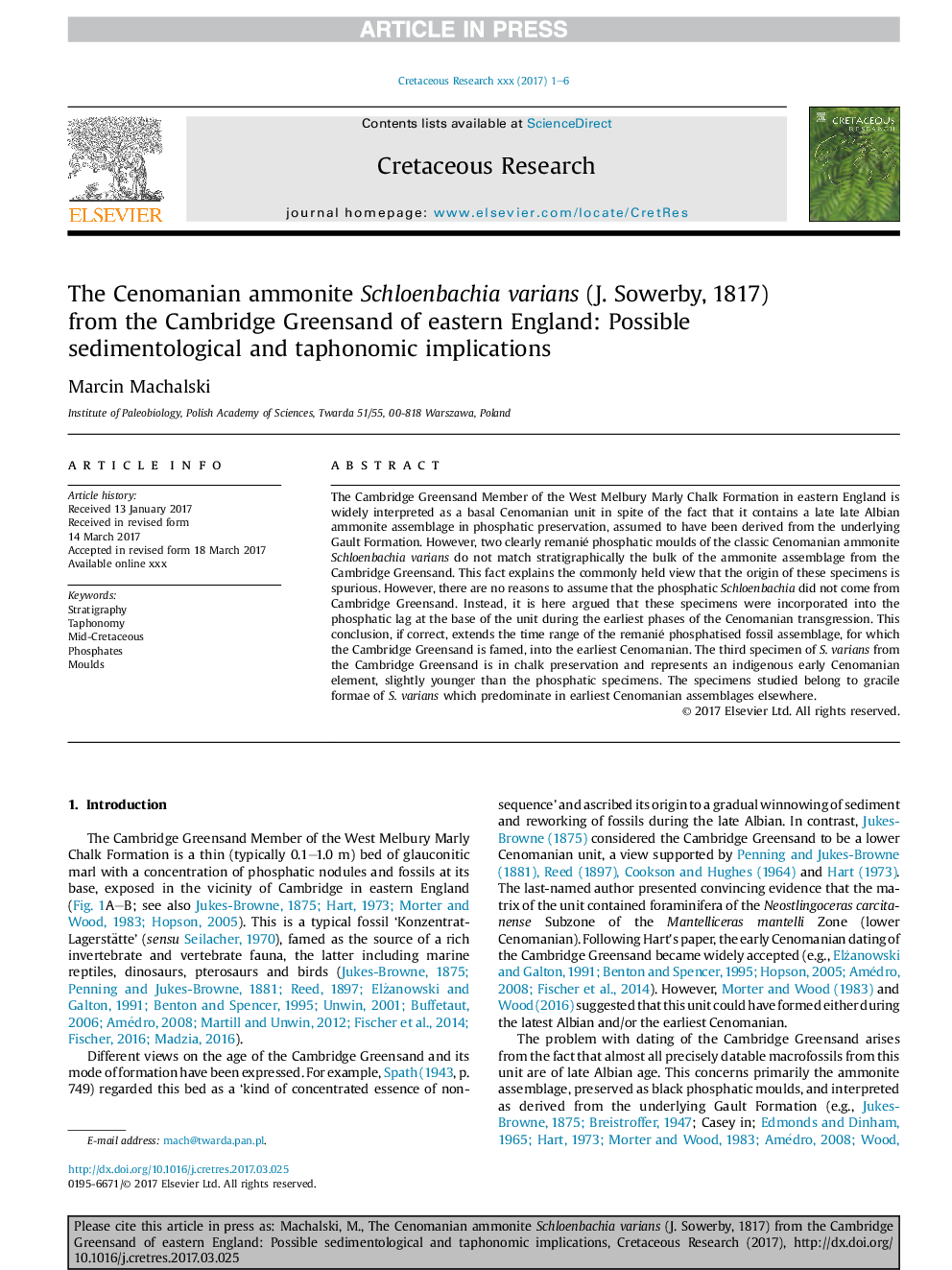| Article ID | Journal | Published Year | Pages | File Type |
|---|---|---|---|---|
| 8916286 | Cretaceous Research | 2018 | 6 Pages |
Abstract
The Cambridge Greensand Member of the West Melbury Marly Chalk Formation in eastern England is widely interpreted as a basal Cenomanian unit in spite of the fact that it contains a late late Albian ammonite assemblage in phosphatic preservation, assumed to have been derived from the underlying Gault Formation. However, two clearly remanié phosphatic moulds of the classic Cenomanian ammonite Schloenbachia varians do not match stratigraphically the bulk of the ammonite assemblage from the Cambridge Greensand. This fact explains the commonly held view that the origin of these specimens is spurious. However, there are no reasons to assume that the phosphatic Schloenbachia did not come from Cambridge Greensand. Instead, it is here argued that these specimens were incorporated into the phosphatic lag at the base of the unit during the earliest phases of the Cenomanian transgression. This conclusion, if correct, extends the time range of the remanié phosphatised fossil assemblage, for which the Cambridge Greensand is famed, into the earliest Cenomanian. The third specimen of S. varians from the Cambridge Greensand is in chalk preservation and represents an indigenous early Cenomanian element, slightly younger than the phosphatic specimens. The specimens studied belong to gracile formae of S. varians which predominate in earliest Cenomanian assemblages elsewhere.
Related Topics
Physical Sciences and Engineering
Earth and Planetary Sciences
Palaeontology
Authors
Marcin Machalski,
